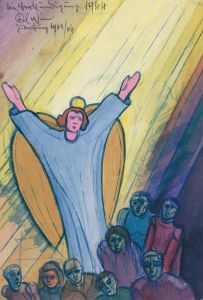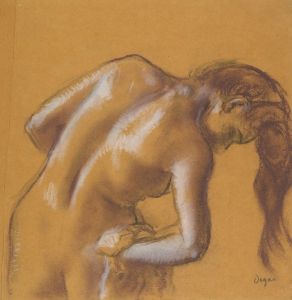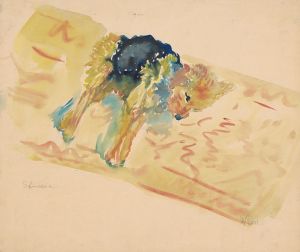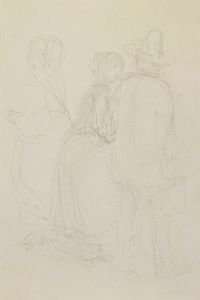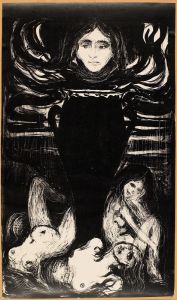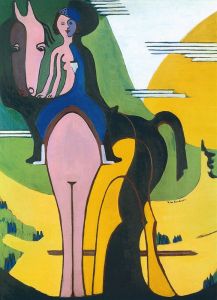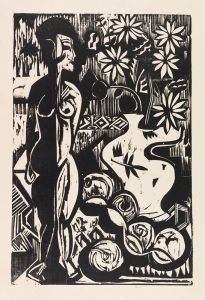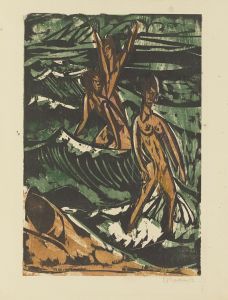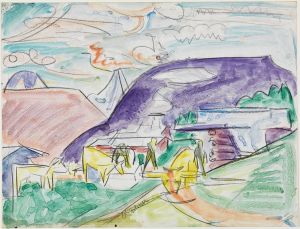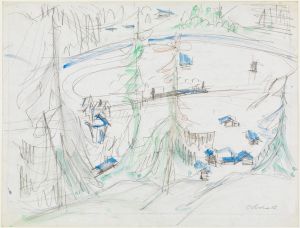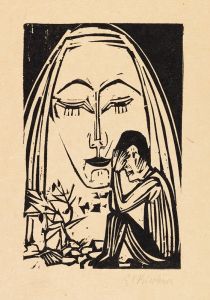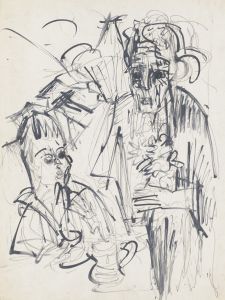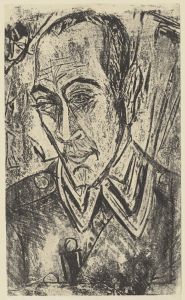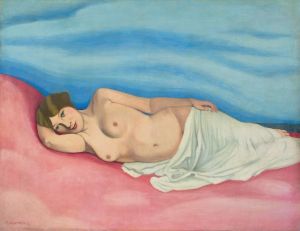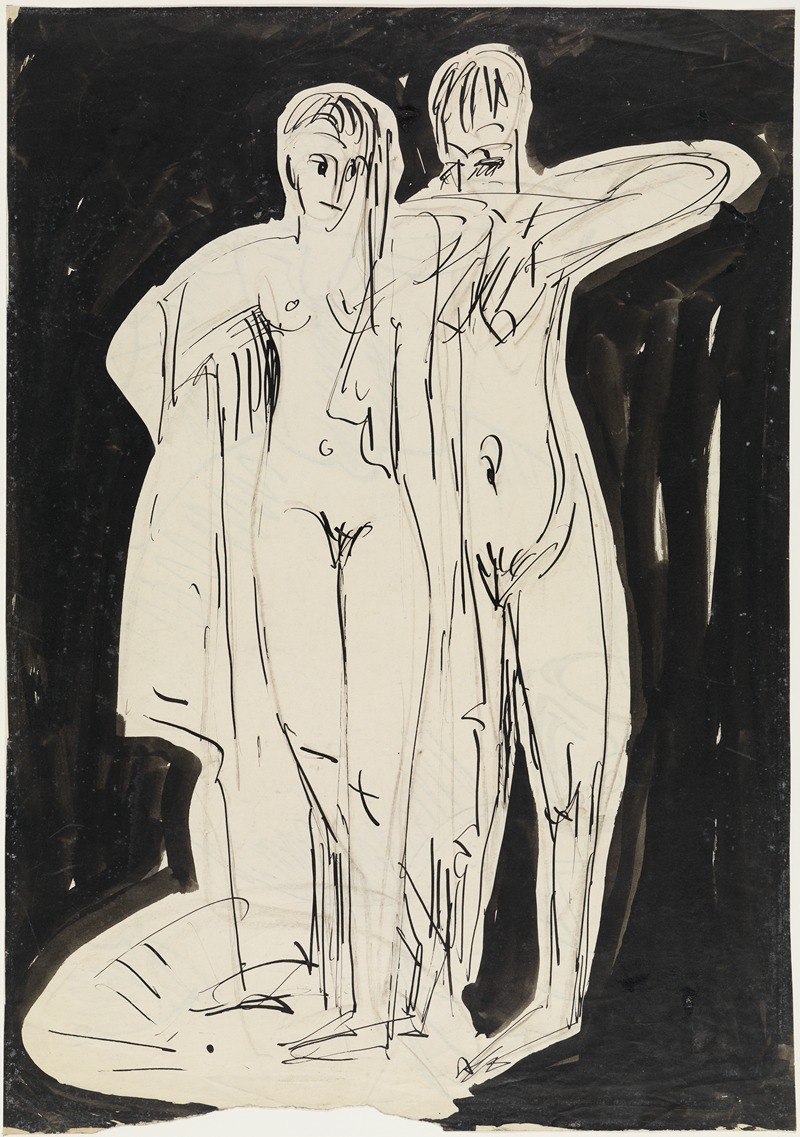
Zwei stehende Akte, sich abtrocknend
A hand-painted replica of Ernst Ludwig Kirchner’s masterpiece Zwei stehende Akte, sich abtrocknend, meticulously crafted by professional artists to capture the true essence of the original. Each piece is created with museum-quality canvas and rare mineral pigments, carefully painted by experienced artists with delicate brushstrokes and rich, layered colors to perfectly recreate the texture of the original artwork. Unlike machine-printed reproductions, this hand-painted version brings the painting to life, infused with the artist’s emotions and skill in every stroke. Whether for personal collection or home decoration, it instantly elevates the artistic atmosphere of any space.
Ernst Ludwig Kirchner's Zwei stehende Akte, sich abtrocknend (Two Standing Nudes, Drying Themselves) is a painting created by the German Expressionist artist, who was a founding member of the influential art group Die Brücke (The Bridge). This group, established in 1905, sought to break away from traditional academic art and embraced a more raw, emotional, and modern approach to painting. Kirchner's work is characterized by bold colors, dynamic compositions, and a focus on the human figure, often exploring themes of modern life, intimacy, and the human condition.
The painting depicts two nude female figures standing and drying themselves, a subject that reflects Kirchner's interest in the natural, unposed human form. The figures are rendered in a style typical of Kirchner's work, with angular lines, exaggerated proportions, and vibrant, non-naturalistic colors. These stylistic choices emphasize emotional expression over realistic representation, aligning with the ideals of the Expressionist movement. The setting of the painting is minimal, drawing attention to the figures and their interaction with the space around them.
Kirchner often drew inspiration from his surroundings and the people in his life. Many of his works feature models who were close to him, including friends and lovers, though specific identities of the figures in Zwei stehende Akte, sich abtrocknend are not documented. The theme of bathing or drying oneself was a recurring motif in Kirchner's oeuvre, reflecting his fascination with the human body in moments of vulnerability and naturalness.
The painting is an example of Kirchner's exploration of the nude as a central subject in his art. For Kirchner and other members of Die Brücke, the nude was not merely a traditional academic exercise but a way to express freedom, vitality, and a connection to nature. This approach was influenced by their interest in non-Western art forms, which they admired for their perceived authenticity and directness.
The exact date of creation for Zwei stehende Akte, sich abtrocknend is not specified, but it likely falls within Kirchner's most productive period, between 1909 and 1914, when he was actively working with Die Brücke and developing his distinctive style. During this time, Kirchner's works often featured bold experimentation with form and color, as well as a focus on themes of modernity and human experience.
As with many of Kirchner's works, the painting reflects the broader cultural and artistic shifts of early 20th-century Germany, a time of rapid industrialization, urbanization, and social change. Kirchner's art captures the tension and energy of this era, offering a glimpse into the evolving relationship between individuals and their environments.
The current location of Zwei stehende Akte, sich abtrocknend is not widely documented in public sources, and further details about its provenance or exhibition history are not readily available. However, Kirchner's works are held in major collections worldwide, and his contributions to modern art continue to be celebrated for their innovation and emotional depth.





